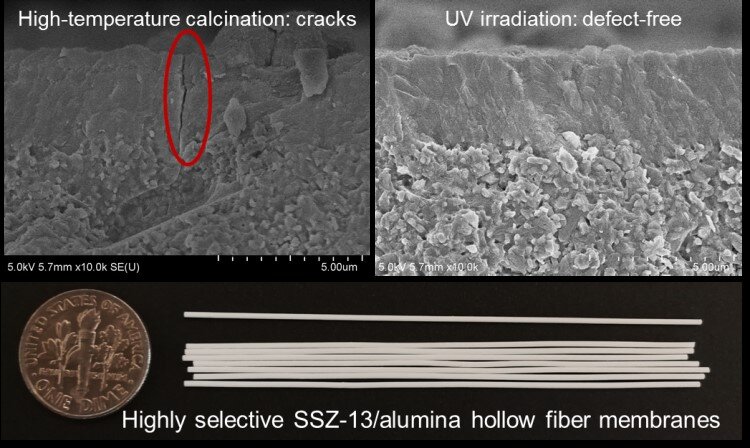Highly Selective SSZ-13 Zeolite Hollow Fiber Membranes by Ultraviolet Activation at Near-Ambient Temperature
S. Yang, Y. H. Kwon, D.-Y. Koh, B. Min, Y. Liu, S. Nair*, CHEMNANOMAT, vol.5, no.1, pp.61~67 (2019)
Zeolitic membranes synthesized using organic structure-directing agents (SDAs) require an activation step to remove the SDA and open their porosity. Activation is typically achieved by high-temperature (>673 K) calcination. This process has multiple disadvantages, including coke formation due to incomplete removal of the SDA as well as the formation of cracks and other defects due to differential thermal expansion of the membrane layer and the underlying support material. Here we report that high-performance hollow fiber membranes of the small-pore (0.38 nm) zeolite SSZ-13 can be produced via UV irradiation to decompose and remove the SDA. Remarkably, UV irradiation allowed complete removal of the bulky SDA (trimethyladamantylammonium hydroxide) from the pores at near-ambient conditions, whereas membranes activated by calcination exhibited severe cracking. The UV-activated SSZ-13 membranes showed excellent H2/C3H8 and CO2/CH4 mixture selectivities (up to 810 and 110 whereas the conventionally activated membranes showed poor selectivity (<5). The combined demonstration of hollow fiber membrane synthesis and low-temperature membrane activation of small-pore zeolite membranes is a significant step in the effort to create reliable, scalable, and low-cost fabrication processes for zeolite membranes for gas separations.


